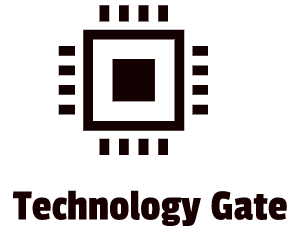Banking Is More Than Plumbing
When most people think about banks, they picture something automatic. Like plumbing behind a wall — invisible, steady, and only noticed when it leaks. Money goes out, and money comes in. Perhaps someone logs in to check a balance occasionally, but otherwise, banking feels passive. That is, until it breaks, because here’s the truth, most companies learn the hard way:
“Banking isn’t neutral infrastructure. It’s a relationship, and relationships demand attention”.
Whether you’re sending a vendor payment, wiring funds to another country, or watching for cash inflows, every transaction flows through decisions you’ve already made, and some you didn’t even realize you made. The bank you picked, the way accounts were set up, and the approvals you built (or didn’t). These invisible decisions shape how secure, responsive, and scalable your Treasury function really is. And too often, they’re outdated.
What You Outgrow Will Eventually Break
Companies typically begin with a single bank, a single account, and a single signatory. In the early stages, this works. Simplicity is a feature, not a flaw, but over time, growth adds friction. Suddenly, you’re dealing with multiple currencies, cross-border compliance, segregated entities, or tax obligations that no one warned you about. And the setup that once felt simple starts to feel fragile. That’s where strong Treasury leadership steps in — not to rip everything out, but to ask the uncomfortable question: “Does this system still serve us?” Most of the time, the honest answer is no.
Complacency in Banking Is a Risk You Can’t Afford
Banking relationships are one of the most overlooked elements in Treasury. A bank is often picked because it’s easy — maybe the founder knew someone, there was a nearby branch, or it’s just the one the company has always used. Years pass, and the business doubles but no one questions the setup.
Accounts stay open that no one uses, authorities remain with people who left two restructurings ago, and fees accumulate without anyone challenging them. And when something finally goes wrong — a blocked payment, a fraud attempt, a frozen wire — panic sets in. But by then, it’s too late to rebuild trust or renegotiate terms. This isn’t just about laziness. It’s about failing to treat banking as a strategic design choice because a Treasury function that doesn’t control its rails will always be reactive.
Treat Your Banking Setup Like a Living System
The best Treasury teams view their banking system as a living, evolving entity, one that requires care. That means regular checkups. Who has access? Are dual approvals in place? Do we really need these six accounts? Has our Relationship Manager changed without us noticing? It’s not about complexity for complexity’s sake. In fact, the goal is the opposite: simplicity by design. Every account, every rule, every control should exist for a reason. And when it no longer serves that reason, it should be adjusted or removed because clarity isn’t just operational, it’s strategic.
One Bank or Many? Intentionality Over Habit
There’s no universal answer to the “how many banks” question. One bank can mean easier management — fewer portals, centralized visibility, and a closer relationship. But if that one bank decides to hike fees, delay international wires, or de-risk specific industries, you’re stuck. On the other hand, working with too many banks can lead to chaos: reconciliations slow down, Treasury teams lose control, and overhead climbs. The right model depends on your business complexity, risk appetite, and growth trajectory. But the keyword is intentional. Assign roles to each bank. Use one for domestic payments, another for FX exposure, and another for collections in a specific region. Don’t just have multiple banks: design their roles, and make the system modular, not messy.
Why Opening a Bank Account Isn’t as Easy as It Sounds
It might sound easy to open a new bank account — just walk into a branch, sign some papers, and you’re done, right? But in reality, it’s rarely that simple. Especially if your company is private equity–owned, the process can be surprisingly painful. That’s because banks have strict Know Your Customer (KYC) rules to prevent fraud and money laundering. They need to verify not just who you are, but who ultimately owns the company. When ownership is layered through holding companies or spread across international entities, it triggers more questions, more documents, and more delays. What should take days can stretch into weeks, all because the bank needs to check every link in the ownership chain. It’s not personal: it’s compliance. For Treasury, this means planning well in advance and anticipating a few hurdles before the first payment is ever made. Treat the process like a real project — assign ownership, track progress, and give it the attention it deserves. When the account finally opens and you’ve made it through the KYC maze, the win feels even better. Because you didn’t just check a box: you navigated a complex process and set the business up to move forward with confidence.
Your Relationship Manager Isn’t Just a Contact: They’re a Lever
Many companies treat the bank’s Relationship Manager like tech support — someone to call when there’s a problem. But great Treasury leaders flip the script. They engage the RM early, build trust, and leverage that relationship to secure better terms, faster service, and strategic insights. When you request a local RM rather than relying on a centralized call center, you will have an advantage, I guarantee you that: wire fees will drop, turnaround time will improve, and the bank might even be able to help you streamline international onboarding. That’s not luck: it’s leverage. And you only get it when you treat your bank as a partner, and not as a vending machine.
A Small Tip, A Big Win: Why the RM Relationship Matters
One of the clearest examples of why a strong Relationship Manager (RM) matters came from a simple conversation. Our Wells Fargo RM noticed that we were manually approving ACH payments through a fraud filter — a good control, but one that came at a hidden cost. Every time we released a line, it triggered a fee of over $10. We hadn’t realized it, but this was happening dozens of times a month. Quietly, we were leaking more than $ 500 in cash every month: over $5,000 a year, gone. The fix? Our RM advised us to set trusted recurring payments on the ACH Fraud Filter whitelist. It was a tiny change: no extra tools, and no system upgrade. But it closed the leak immediately. That one piece of advice paid for itself ten times over and reminded us that banking isn’t just about systems: it’s about relationships. When you treat your RM like a partner, not a ticket desk, you unlock value that doesn’t show up in the standard product brochure.
Control Without Bureaucracy
As a business scales, so does the temptation to relax controls. Executives want faster approvals, departments ask for payment shortcuts, and vendors pressure for quicker processing. But Treasury can’t afford to bend too far. The moment you give up dual approvals, allow outdated signatories, or leave orphaned accounts untouched, you’ve opened the door to operational risk: fraud, error, and even reputational damage. You don’t need an army to stay in control. You need discipline by having clear access rights, a quarterly review cadence, a closure policy for dormant accounts, and the courage to say no when someone asks to bypass a safeguard “just this once.” Because Treasury isn’t just about moving money, it’s about protecting the system that lets the rest of the company operate with confidence.
Global Banking: Slow, Painful — and Worth It
Opening a bank account in a new country is one of the least glamorous jobs in Treasury. The paperwork feels endless, the requirements keep shifting, and the process drags on. And when you think you’re done, another compliance question pops up.
But the day that account finally opens, and the first cross-border payment is processed, marks a significant milestone. You’ve planted a flag, and you’ve managed to enable local operations to run independently, without chasing favors. You’ve built real infrastructure: quietly, behind the scenes, you’ve helped the company grow. Most people overlook these moments, but you shouldn’t. When you pull this off, it’s worth celebrating, because you didn’t just move money. You completed the playbook for true Treasury leadership: not just cash visibility, but foundational enablement.
Your Banking System Reflects Your Financial Maturity
In the end, banking isn’t just about transactions. It’s about structure, controls, partnerships, and design. It reveals whether your Finance team is scaling with the business or holding it back. Whether you’re chasing exceptions or building systems that have, even when no one’s watching. So the next time you log in to check a bank balance, ask yourself:
“Is this setup designed to serve where we are now, or where we used to be”?
Want to go deeper?
If you’ve ever wondered what Finance looks like when it becomes a force for alignment, change, and growth — you’ll find it there. Subscribe to never miss a post at https://www.technology-gate.com/.





